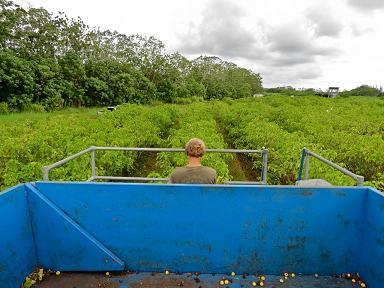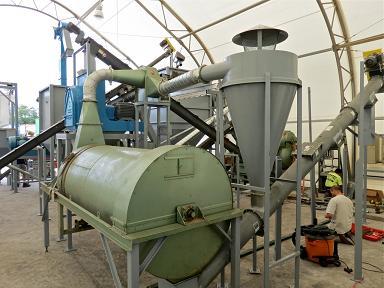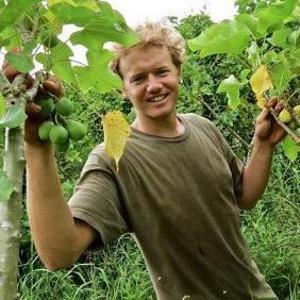Puna farm to supply jatropha feedstock to Big Island Biodiesel




Photo: Pacific Biodiesel Technologies
August 20, 2013
BY Pacific Biodiesel Technologies
Jatropha harvesting began last week at the Hawaii Pure Plant Oil (HIPPO) farm founded in 2008 by father and son partners Christian and James Twigg-Smith. HIPPO has planted a total of 200 acres of jatropha in the Puna district of Hawaii Island with the intent of harvesting its seeds and extracting the oil for biodiesel production. Now, five years after the farm’s inception, the Twigg-Smiths have formed a direct collaboration with Pacific Biodiesel Technologies under its federally funded Hawaii Military Biofuel Crop project. The project involves developing production models for jatropha and other crops to share with potential biofuel crop growers throughout the state.
“We are currently having our best harvest to date,” said James Twigg-Smith who is overseeing the harvest as a PBT employee. Twigg-Smith noted that the harvest will run through mid-September. “The fields were prepared with care so as much labor as possible can be done mechanically,” he added. Smart planning on Twigg-Smith’s part has him anticipating a harvest of roughly 40,000 pounds for the first 100 acres.
Because of its tolerance for drought as well as the rich oil content of the seeds, jatropha has been has been an intriguing component in discussions about feedstock for biodiesel production. The HIPPO farm is currently the largest jatropha crop in the U.S., and also has some of the oldest growth, which is important in determining maximum yield capacity. Jatropha Curcas is a species of flowering plant cultivated in tropical and subtropical regions around the world. The plant is a semi-evergreen shrub or small tree and the seeds contain oil that can be processed into high-quality biodiesel fuel for use in standard diesel engines.
Advertisement
PBT will now be able to process the jatropha seeds for oil at its newly installed seed crushing mill, also part of the HMBC project, located only a few miles from the farm. Once the oil has been extracted, it will be transported next door to Big Island Biodiesel for processing into the highest quality distilled biodiesel. “This is a very exciting time for our farm and locally grown biodiesel production in Hawaii,” said Twigg-Smith.
Advertisement
Related Stories
The USDA reduced its estimate for 2024-’25 soybean use in biofuel production in its latest WASDE report, released May 12. The agency expects soybean oil use in biofuel to increase during the 2025-’26 marketing year.
HutanBio's microalgal biofuel production shown to be net-negative in an independent life cycle assessment by EcoAct
HutanBio on May 8 announced that the production process for its proprietary HBx microalgal biofuel achieves net-negative carbon emissions, based on an independent cradle-to-gate life cycle assessment (LCA) conducted by EcoAct.
According to a new economic contribution study released by the Iowa Renewable Fuels Association on May 6, Iowa biofuels production has begun to reflect stagnant corn demand throughout the agriculture economy.
Repsol and Bunge on April 25 announced plans to incorporate the use of camelina and safflower feedstocks in the production of renewable fuels, including renewable diesel and sustainable aviation fuel (SAF).
U.S. operable biofuel capacity in February was unchanged from the previous month, according to data released by the U.S. EIA on April 30. Feedstock consumption for February was down when compared to both January 2025 and February 2024.
Upcoming Events










